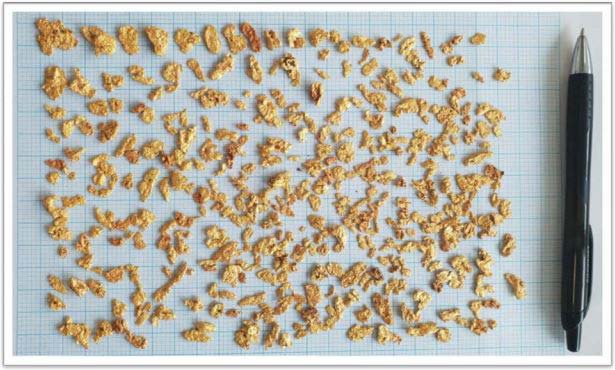Marindi finds ‘hundreds’ of gold nuggets in the Pilbara

Pic: Bloomberg Creative / Bloomberg Creative Photos via Getty Images
Marindi Metals has found over six ounces of gold nuggets at its Bellary Dome conglomerate gold project in Western Australia’s Pilbara region.
The company told investors today they are just like the ones found by Artemis Resources (ASX:ARV) and Canadian partner Novo Resources at their projects in the Pilbara.
“The stratigraphic position of the conglomerates within the Bellary Dome project is similar to the gold-bearing horizon at the Comet Well/Purdy’s Reward projects – that is, a sequence of conglomerates and other sediments directly above Archaean basement and below the Mt Roe Basalts,” boss Simon Lawson said.
“The nature of the nuggets recovered by these prospectors on our ground is also very similar to those recovered by Novo Resources ~250km further to the north.”
Conglomerate gold refers to nuggets hosted in rock containing rounded gray quartz pebbles and other minerals.
The world’s most productive gold region, South Africa’s Witwatersrand Basin, is famous for its similar geological formation.
The Mt Roe Basalt is a volcanic rock formation in the Pilbara’s Fortescue Basin that is known to host gold mineralisation as well as copper, zinc and uranium.
It is one of the horizons considered to be the most likely hosts for the widely sought ‘Witwatersrand-style’ gold in the Pilbara.
Marindi said it had recovered “hundreds of gold nuggets” that it described as “pitted, flattened” and like “watermelon seeds”.

Watermelon seed nuggets have been all the rage since July last year when Artemis and Novo found small, flat seed-shaped gold nuggets near Karratha in northern Western Australia.
The gold on Marindi’s landholding, which totalled 6.7 ounces, was recovered about 1.2km east of Edney’s Find, a historical gold prospect trenched in the early 1970s.
Last month, consultant geologist George Merhi identified conglomerate with buckshot pyrite and visible gold in the same spot.
- Bookmark this link for small cap breaking news
- Discuss small cap news in our Facebook group
- Follow us on Facebook or Twitter
- Subscribe to our daily newsletter
UNLOCK INSIGHTS
Discover the untold stories of emerging ASX stocks.
Daily news and expert analysis, it's free to subscribe.
By proceeding, you confirm you understand that we handle personal information in accordance with our Privacy Policy.







